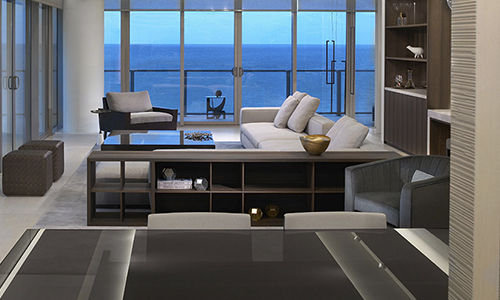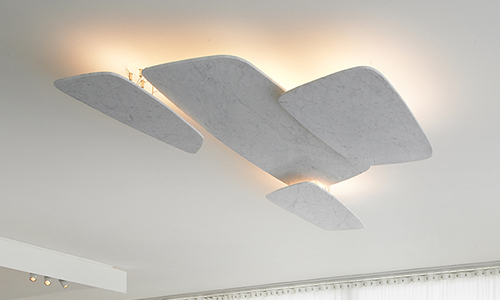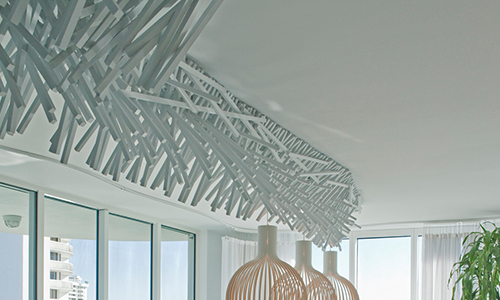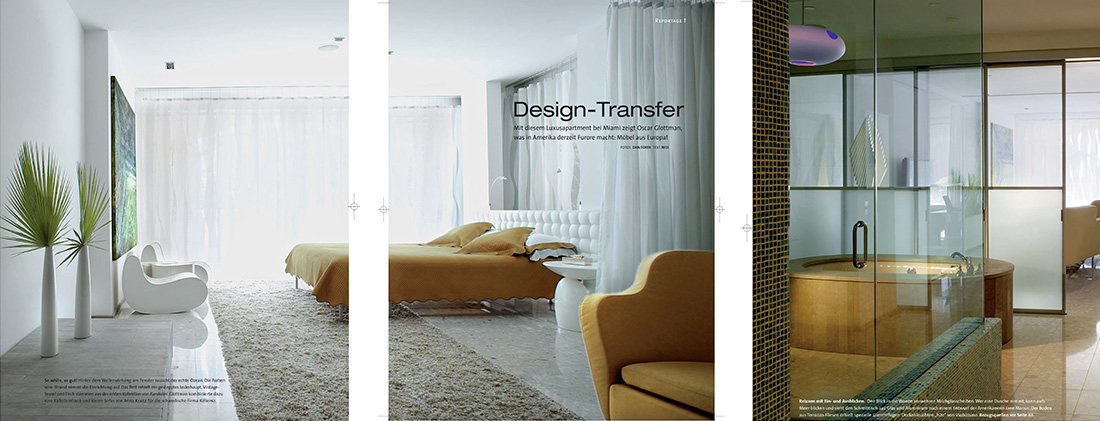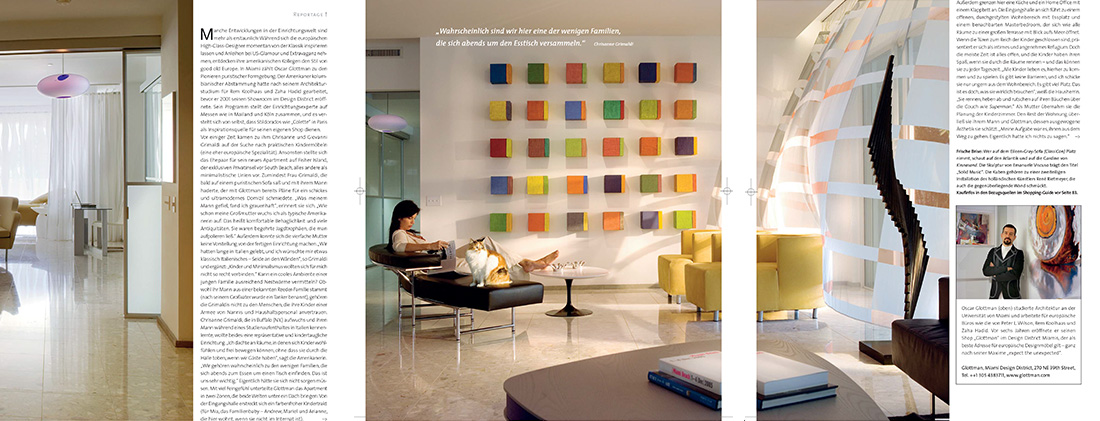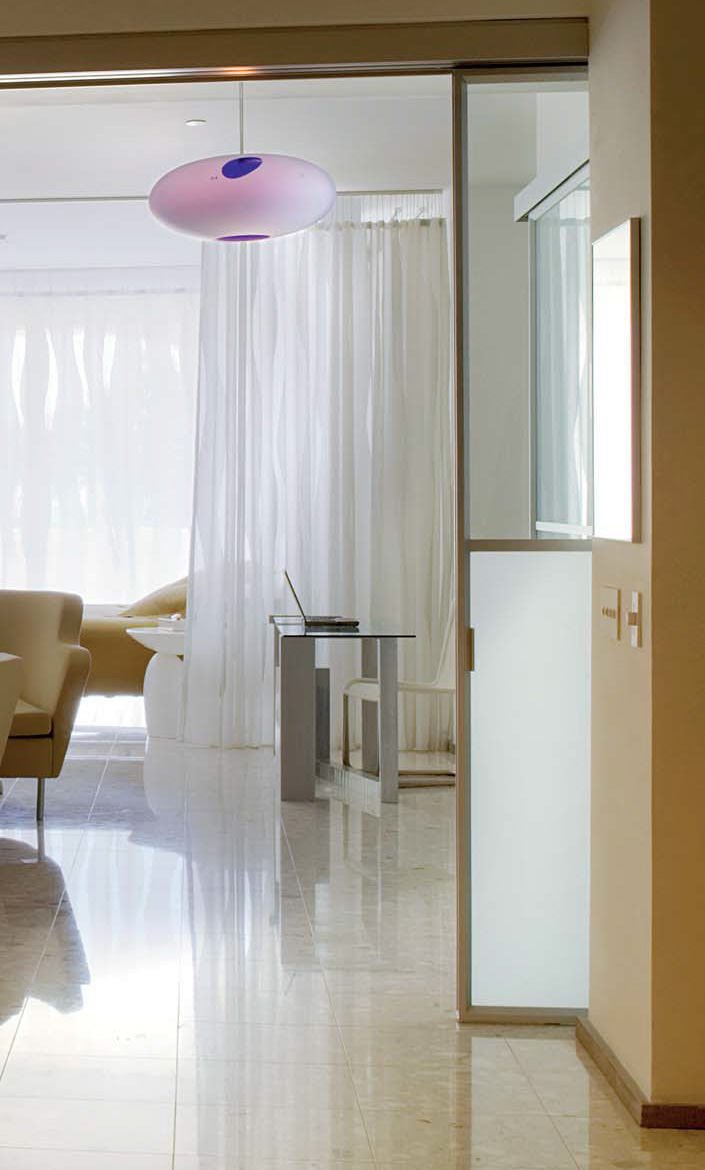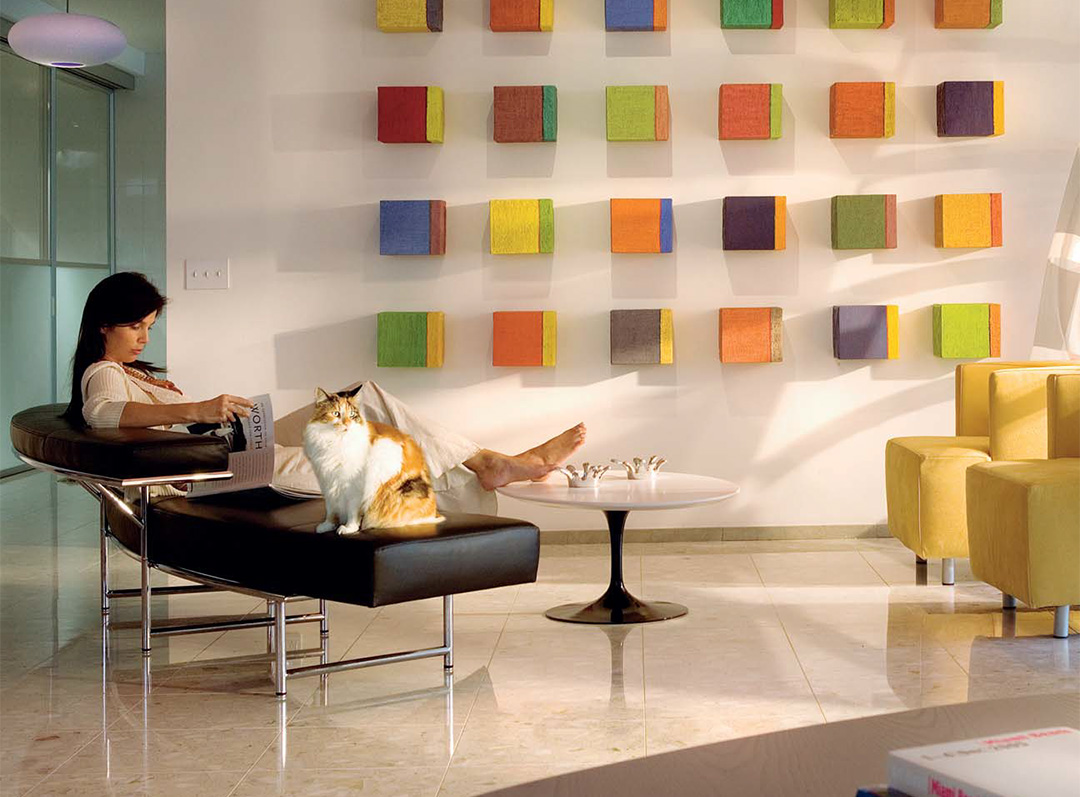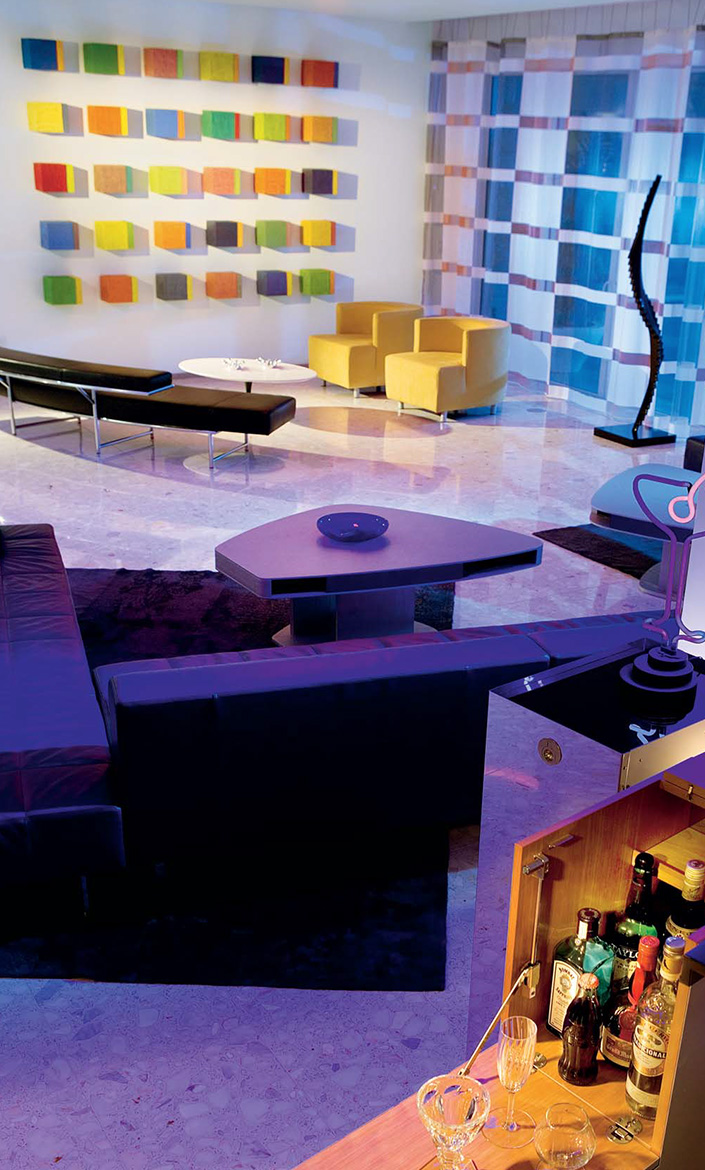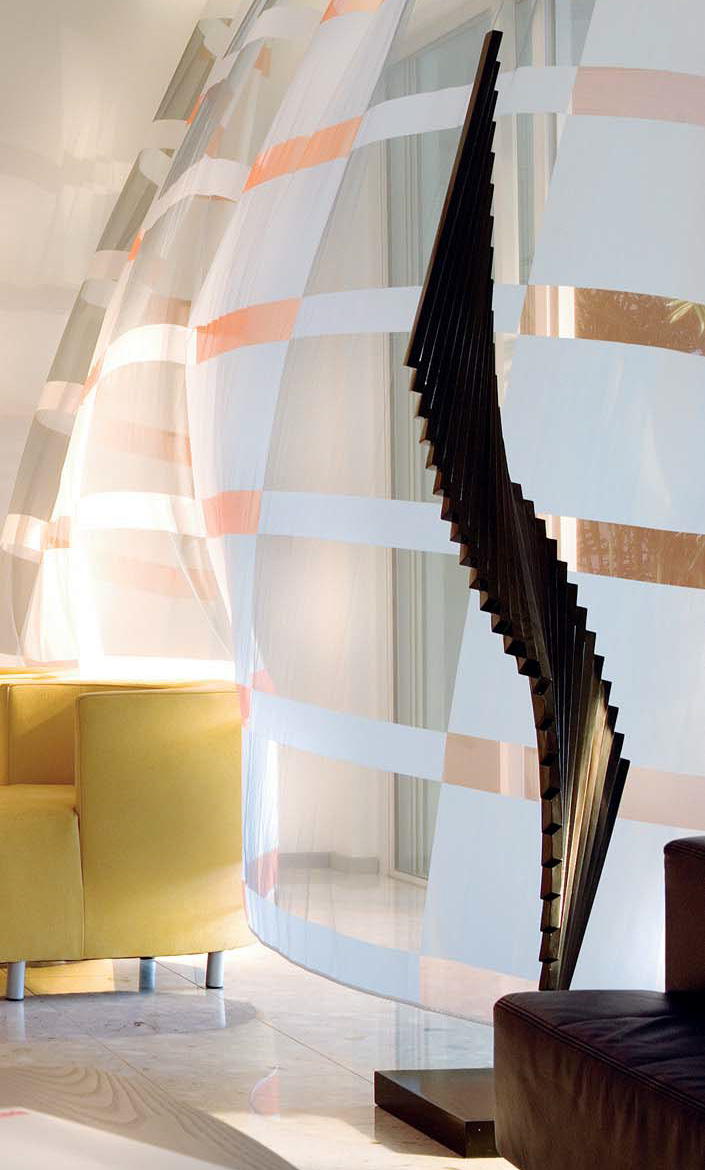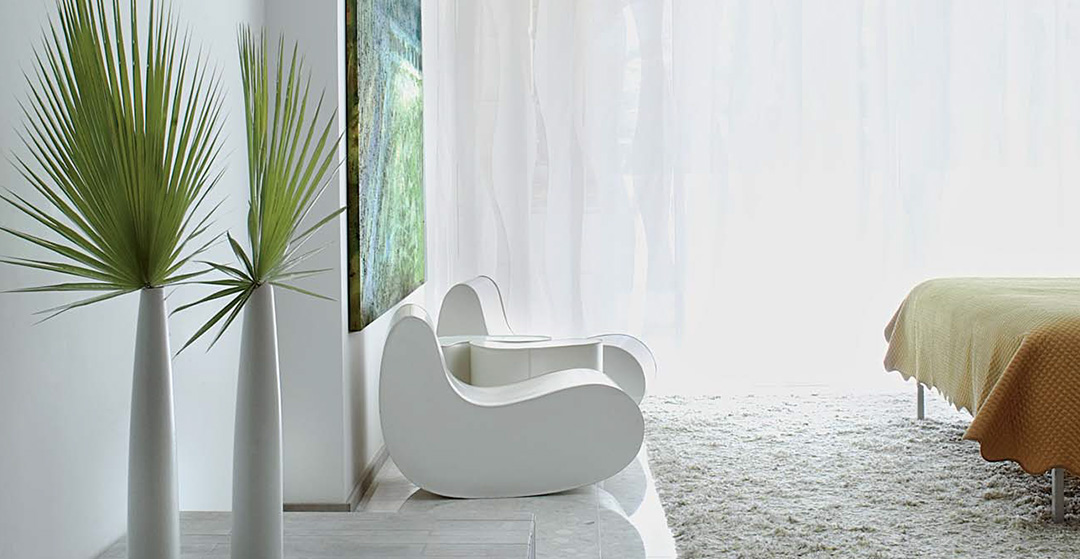Photos courtesy of: dan forer
Giovanni Grimaldi, who grew up in a house in Neapel, Italy, that was designed by Gio Ponti, was excited about living in an ultra-modern home.
When it comes to minimalist design, Oscar Glottman’s name is well-known in Miami: His creative and sophisticated approach in architecture and interior design, as well as in lighting, furniture, and sound design has produced a portfolio of international projects. Unique and extravagant is his lifestyle showroom in the Miami Design District: Glottman Architecture.Design.Furniture offers design incorporating construction systems along with design furniture, kitchens, closets, lighting, and accessories, strongly represented by European lines.
In the end, there was no need to be concerned. Oscar Glottman used much finesse by dividing the apartment into two sections and seamlessly connecting these two worlds. There’s a colourful wing for the kids that extends from the foyer. It is located next to the kitchen and the home office with Murphy bed. The foyer itself leads to an open and very stylish living space with a dining area and adjacent master bedroom. All rooms open up to a patio and face the ocean. When the doors of the children’s section are closed, the rest of the apartment presents itself as an intimate and pleasant retreat. Most of the time, though, everything stays open so that the kids can move around and enjoy themselves. “All kids love coming and playing here. There are no barriers, and I just don’t like sending them away from the living room area. There’s so much space, and in the end that’s what kids really need.”
When Glottman first saw the apartment he knew that nothing would stay the same. Says the architect: “The first thing I noticed was the horrible foyer. When you entered the apartment you immediately stood right next to a pair of ugly swing doors that led to the supply rooms. It was a truly dark and not very inviting place” Glottman had the doors replaced by moving elements made out of glass and aluminium that offer lots of natural light and provide a more refined atmosphere. Also the connection between the bedrooms and small closets was completely altered.
For Glottman the planning stands and falls with the details. Explains Giovanni Grimaldi: “Also for us they are important, such as the seams of the couch as well as the splices between the tiles. I didn’t want the usual splices that tend to darken over-time. For this reason we used a special kind of rubber.” Minimalism works only with this kind of precision.
Nonetheless, the Grimaldi family fills their apartment with life every day: the kids play Superman, friends come by and bring freshly caught fish, and relatives from Italy come and visit on a regular basis. A few additional rooms would be practical, because the children are growing up and becoming more demanding. But another remodelling is out of the question for Chrisanne Grimaldi -even though it would be possible to add a few more bedrooms. “But it would be a sin to destroy this piece of art planned by Oscar Glottman and my husband Giovanni.”
And Oscar Glottman’s inventiveness appears to be inexhaustible…

